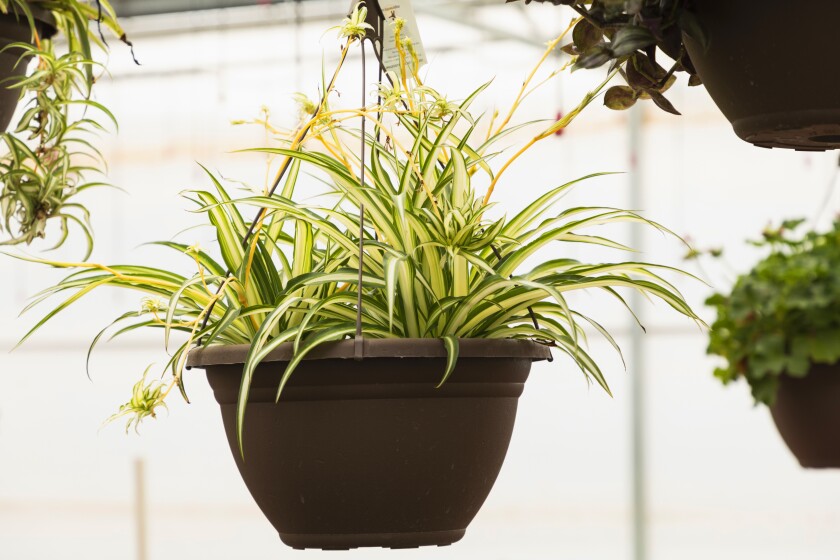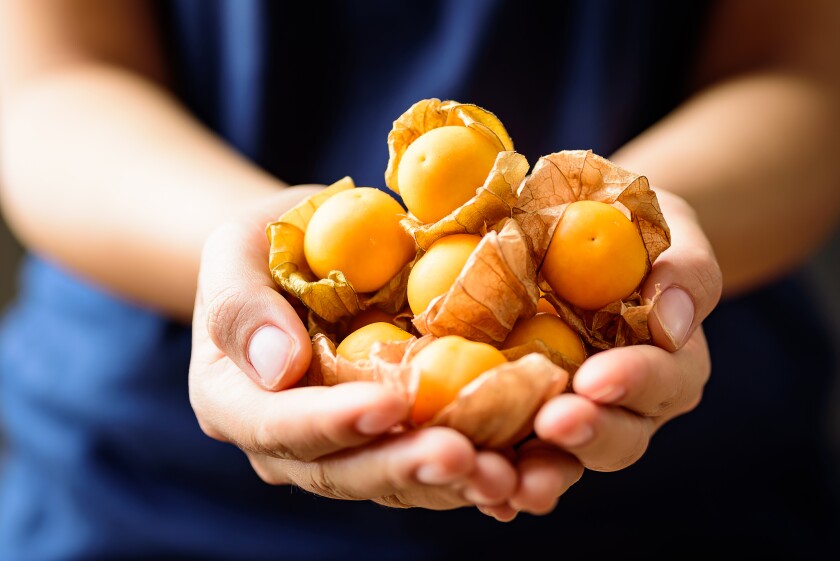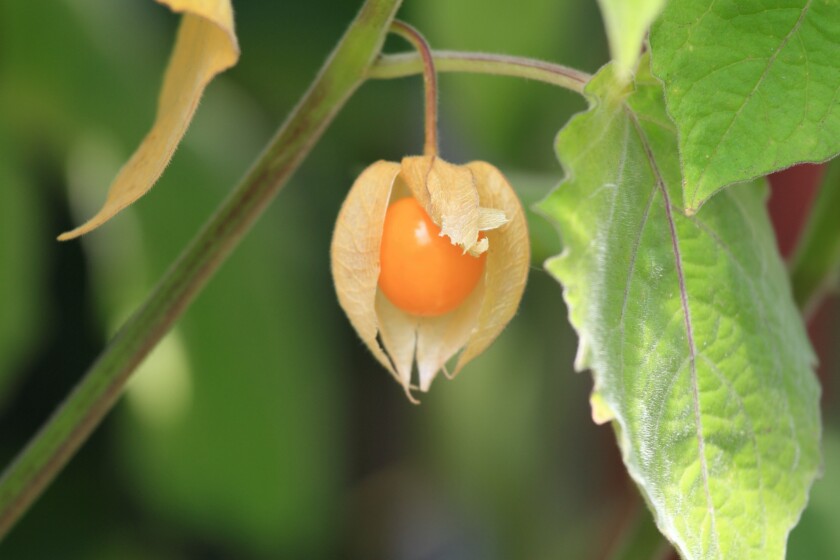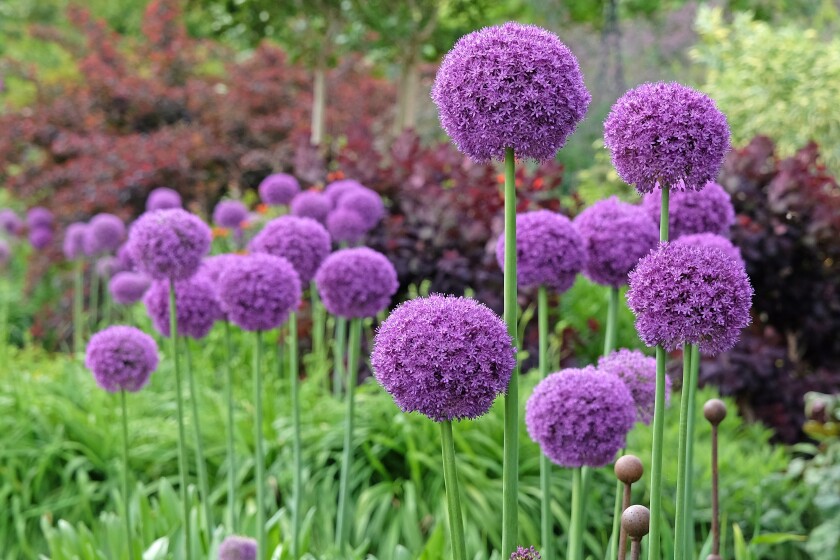Dear Master Gardener: The leaves of my spider plant are a sickly pale green. I have it near a south window. Is it getting too much light?
Answer: There are several reasons why a spider plant loses its vibrant green color and turns pale. The most common reason has to do with light – either too little or too much. In your case it is probably getting too much direct sunlight, depending on how far away from the south window it is. Spider plants like bright light, but not direct sunlight. The foliage can scald if the plant is getting direct sunlight.
Over or under-watering, not enough nitrogen, and fluoride toxicity are other possibilities. If a spider plant does not get enough water, the leaves may become pale and faded. Overwatering can lead to root rot, which also causes the leaves to lose color. Allow the top half inch to one-inch of the soil to dry out between waterings. Use unsoftened, room temperature water.
Spider plants need nitrogen for healthy leaves and a lack of nitrogen can lead to pale green leaves. Use a balanced houseplant fertilizer during spring and summer at half strength, feeding the plant every 2-4 weeks. Fluoride in city water can cause leaves to turn pale and/or leaf tips to turn brown. Consider using distilled, rain water, or melted snow (in winter) for watering.

Spider plants like bright light, but not direct sunlight. The foliage can scald if the plant is getting direct sunlight.
Contributed / Metro Newspaper Service
Dear Master Gardener: Isn’t there a wild plum tree that is native to Minnesota?
Answer: Yes, American plum (Prunus americana), also known as wild plum, is the most common plum tree in the Midwest and native to most of Minnesota.
It is a small tree or multi-stemmed shrub that reaches 15-25 feet in height and width at maturity. It is fast growing and short-lived, with a life span of 15-30 years.
In the spring the trees are covered in flowers that are rich in nectar and attract spring-time butterflies and other pollinators. The plums appear in early autumn and have a beautiful blend of color from yellowish through rose pink with a purplish tinge. They are edible, but not of good quality. Jellies and preserves can be made with the fruit. The leaves have good fall color of apricot yellow to red. Older trees have bark with striking curled edges, and their gnarly form creates winter interest.
American plum trees are best suited to natural landscapes such as sunny woodland borders. They can be a little aggressive due to their excessive sucker growth and ability to grow in thickets. They are susceptible to a multitude of problems such as black knot, mildew, rust, root rots, fireblight, borers, mites, and tent caterpillars.
Dear Master Gardener: Can wild strawberries be eaten? If so, can they be grown in a home garden?
Answer: Yes to both questions! Wild strawberries (Fragaria virginiana), also known as Virginia strawberries, are delicious and most would agree that they taste much better than commercial strawberries. They are native to most of North America and all of Minnesota.
The spring flowers are pure white with yellow centers, the fruits are small and red and sweet, and the leaves turn a rich shade of red in autumn. The fruit ripens in late spring or early summer. Wild strawberries make a fabulous ground cover and spread easily by runners.
They grow well in full sun and even dry shade. They are important plants for edible landscapes and food forests (a food forest is a food production system that contains a variety of food plants with the goal of replicating the ecosystems and growing patterns found in nature.)
There is another native wild strawberry, Fragaria vesca, which is also common and widespread. It can be mistaken for Fragaria virginiana. It has larger teeth and more prominent veins on the leaves, the fruit is longer than its width with raised seeds, and the flowers are smaller. Fragaria vesca is found in moister, shadier areas.

Ground-cherry, also known as husk-tomato, has fuzzy leaves that are oval or heart-shaped, with yellow flowers that have five brown spots on the inside.
Courtesy of Shutterstock
Dear Master Gardener: When I was a child, living in southern Minnesota, we had ground-cherries. I never hear about them and was wondering if they grow up here?
Answer: Ground-cherries are in the genus Physalis, which also include Chinese-lantern and tomatillo, and are native to Central and South America. They belong to the solanaceae (nightshade) family and are related to tomatoes, peppers, and eggplants. Ground-cherry, also known as husk-tomato, has fuzzy leaves that are oval or heart-shaped, with yellow flowers that have five brown spots on the inside. The yellowish-colored fruit is the size and shape of a cherry tomato and lies inside a papery husk.

The husk turns brown when the fruit is ripe, then the fruit drops from the plant. The fruit will keep for several weeks if you leave it in the husk.
Courtesy of Shutterstock
The husk turns brown when the fruit is ripe, then the fruit drops from the plant. The fruit will keep for several weeks if you leave it in the husk. The fruit has a unique, pleasing flavor that has been described as a tomato-pineapple blend. Ground-cherries can be eaten raw or used in salads, desserts, jams, jellies, or as a cooked sauce.
Like tomatoes, you can start the seeds indoors then transplant the seedlings into your garden after the last spring freeze. They do well in ordinary well-drained garden soil in a sunny location. Place the plants two to three feet apart. The fruit matures about the same time as late tomatoes (mid to late summer).

The large, purple, globe-shaped Alliums add drama and fragrance to a garden. There are several kinds of Alliums.
Courtesy of Shutterstock
Dear Master Gardener: I saw an interesting plant in a picture of a garden that was tall and looked like a big purple ball. What is it and will it grow in the Brainerd lakes area?
Answer: It sounds like you are describing an Allium, which is an ornamental onion. The large, purple, globe-shaped Alliums add drama and fragrance to a garden. They are easy to grow, make lovely cut flowers, attract bees and butterflies, and best of all they are rabbit and deer resistant! Squirrels don’t even dig up the huge bulbs! There are several Alliums that are hardy to zone 3.
Allium Globemaster has gigantic, rich purple blooms that measure 8-10 inches in diameter. It gets 36 inches tall. Allium Giganteum gets 36-48 inches tall with 6-8 diameter flowers. Allium Gladiator is a new and improved version of Allium Giganteum. It is not as big as Globemaster or Ambassador, but has a long bloom period. Its flowers measure about 6 inches in diameter atop 42-inch stems.
The purple-violet flowers of Allium Ambassador get 6-8 inches in diameter atop 48-inch stems. Allium Sensation reaches a height of 30 inches and has the smallest purple globe-shaped flowers measuring 4-5 inches in diameter. Plant the bulbs in the fall at a depth of 7 inches (6 inches for Sensation) and enjoy their dramatic blooms in late spring/early summer.
You may get your garden questions answered by calling the new Master Gardener Help Line at 218-824-1068 and leaving a message. A Master Gardener will return your call. Or, emailing me at
umnmastergardener@gmail.com
and I will answer you in the column if space allows.
University of Minnesota Extension Master Gardeners are trained and certified volunteers for the University of Minnesota Extension. Information given in this column is based on university research.


Comments are closed.